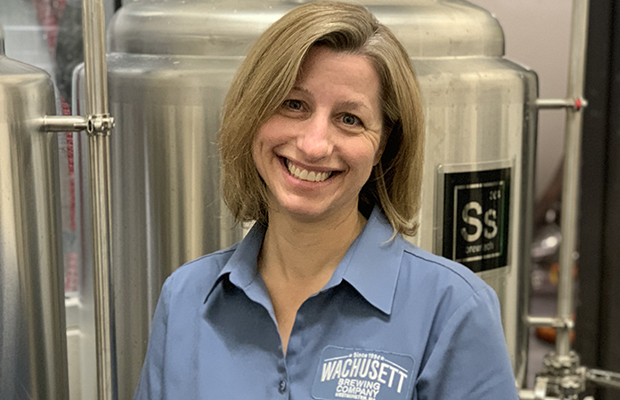
When it comes to quality assurance, smaller breweries often face a daunting gap: They lack the deep resources to build out a full lab but still want to ensure their beer is consistent, safe, and delicious. For many, that means finding ways to prioritize key quality checks that don’t require sophisticated equipment or major financial investment.
From clean yeast and accurate pH to strong SOPs and trained palates, breweries have multiple paths to consistent beer quality without high-end equipment. What ties it all together is vigilance, documentation, and commitment to never skipping the little things.
“It really comes down to the basics,” said Vinnie Cilurzo, co-founder of Russian River. “In short, take really good notes all the way through the process.”
Cilurzo points out that the little things, like gravity, pH, and ABV are essential metrics to track.
“On brew day, I’d take lots of pH checks all the way through the process so you know what to expect,” he said. “It is also a good idea to take a mid-boil gravity check for reference against what the actual should be.”
For Cilurzo, fermentation tracking is critical regardless of whether a batch is experimental or a production run.
“Track the fermentation on a daily basis — this will help establish what the final fermentation curve on the larger scale will look like,” he said. “If you are making a dry-hopped beer, make sure you take a gravity before you add the hops, along with pH, so you can track the hop creep secondary fermentation.”
Brad Bergman, brewing director at Sycamore Brewing in Charlotte, echoed the importance of gravity and pH monitoring as a minimum baseline for quality control.
“You have to ensure your ABV is in specification to legally sell it, and in order to understand your costs and room for improvement you need to understand your mash efficiency,” Bergman said. “You don’t need a lot of fancy equipment to do this — simply a hydrometer.”
Bergman added that pH should be top of mind across the brewery, not just in the brewhouse. “Understanding your pH and water chemistry will result in better tasting beer, more effective and efficient cleaning and CIP chemical use, and safer disposal of brewery waste.
“pH meters are cheap and easy to use — a working brewery must have at least one.”
Beyond gravity and pH, some small-scale lab tools can make a major difference. Bergman and others recommend investing in a microscope and hemocytometer.
“It’s a powerful tool to perform cell counts and monitor fermentation and yeast in storage,” Bergman said. “If you’re keeping your brewery and your tanks clean, making wort at the gravity you want and in the proper pH range, and pitching an adequate amount of healthy, clean yeast, you are well on your way to making good, clean beer.”
Yeast health was a central theme for several brewers who replied to Brewer Mag.
Christopher Leonard, brewmaster and operations manager at Heavy Seas Beer emphasized that point.
“Yeast health is paramount,” he said. “A microscope and a hemocytometer is a wise choice to spend on any initial QC equipment.”
Leonard also recommends looking beyond your own walls.
“Developing relationships with larger breweries is always a good idea,” he said. “We at Heavy Seas are always happy to help our colleagues with ABV analysis, CO2/DO, micro plating, even PCR assessment — if we know the brewery well enough — usually at no cost or simply at the cost of our materials.
“It actually helps us too. We possibly see some things that might not pop up here but can inform us down the road. It’s a win-win in my opinion.”
While basic instruments and data collection are essential, the human element is just as important — perhaps more so. For breweries without access to high-end equipment, sensory analysis is often the first and last line of defense against a bad batch.
“We believe the most important aspect to quality control is sensory,” said Will Kmetz, innovation brewer at Fat Head’s Brewery. “We’re fortunate to have access to a fancy lab and all the testing you could want, but when it comes down to it, we let our senses drive most decisions.”
Blind sensory panels help Fat Head’s avoid bias.
READ MORE: New Lab can Improve Quality, Consistency for Breweries
“The more individuals involved the better, helping gather as much data and opinion as possible,” Kmetz said. “If you aren’t confident in your sensory skills, there is a ton of useful information online — even phone applications — to help guide you. It’s a learned skill, but one we’d recommend putting a lot of effort into.”
Tony Hansen, chief innovation officer at Short’s Brewing, agreed that sensory is a vital tool for smaller brewers and adds that proper SOPs form the foundation.
“Really, quality assurance would be the first critical step,” he said. “Having and adhering to SOPs to ensure that you are producing beer in a clean and sterile environment following good manufacturing practices can be the best quality check.”
For Hansen, sensory checkpoints should be built into every phase of production.
“Having a strong sensory analysis protocol at each stage of the process is crucial,” he added. “Sensory analysis information is available for free and training kits are fairly cheap.”
Hansen also stressed the importance of written documentation when improving a beer over time.
“In order to refine a recipe, I highly recommend keeping very detailed notes and documentation for every batch,” he said. “Not only during each step of the brewing and fermentation process but also the tasting notes and feedback from consumers. Do not rely on your memory.”
The team at The Original 40 takes a similar approach. Head brewer Kyle Fjalstad pointed out that “outside of taking regular gravities and pH readings, breweries should rely on their employees’ senses. It doesn’t cost anything to taste and smell a beer in-process. Every cellar sheet should include an area for tasting notes to look for any potential problems or identify successes.”





Be the first to comment